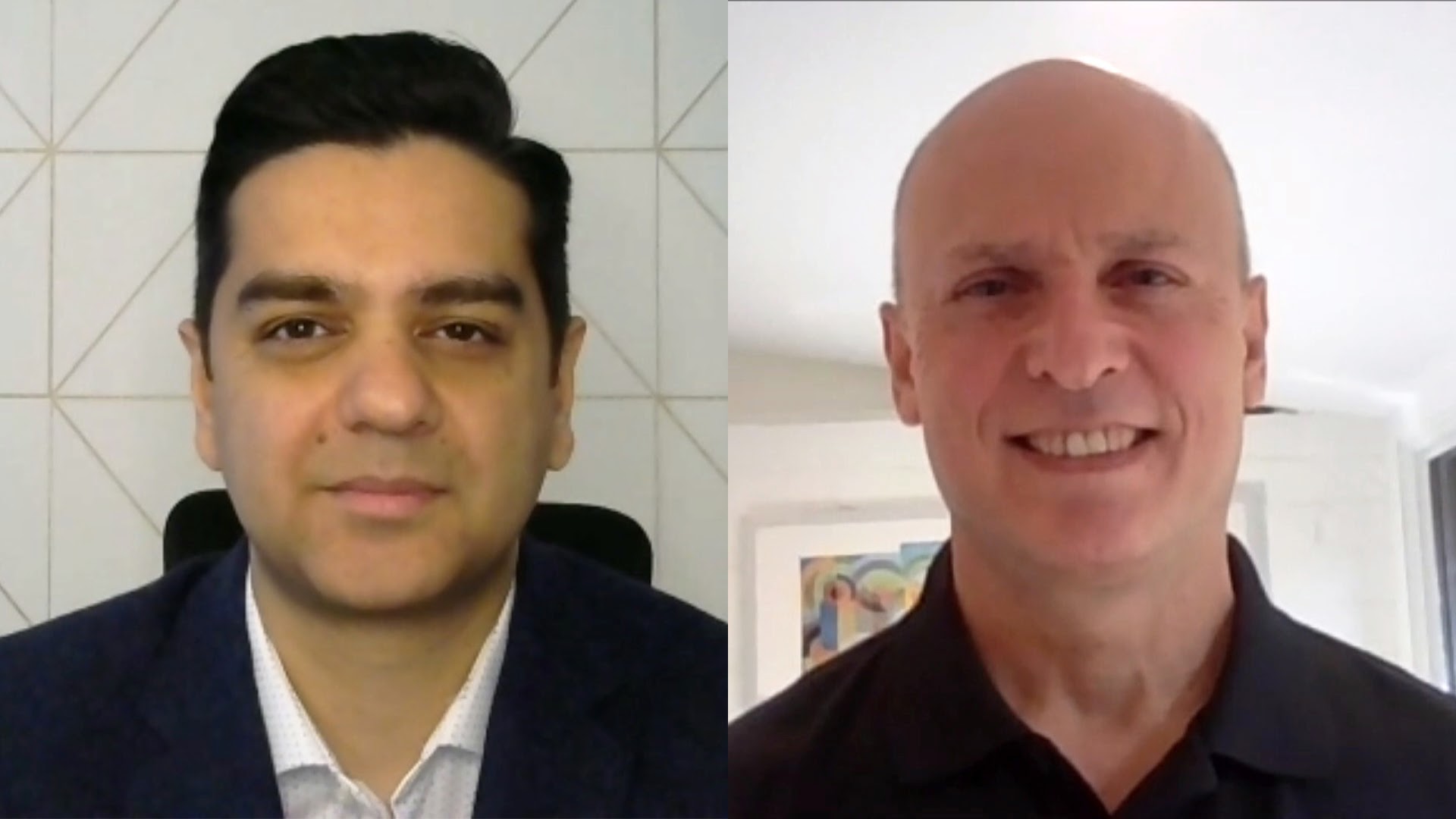 AI
AI
 AI
AI
 AI
AI
As the use of machine learning grows and gains complexity, the cost and time of training models can be challenging for enterprises. Amazon Web Services Inc. announced that its Amazon EC2 cloud management platform will be powered by Gaudi accelerators from Habana Labs, an Intel company, to increase the efficiency of this process, according to Chetan Kapoor (pictured, left), senior manager of product management, EC2, at AWS.
“As we all know, training of deep learning models is a really computationally extensive task; oftentimes, it takes too long and costs too much,” he said. “We expect for [these instances] to provide up to 40% better price performance than top-of-the-line GPU instances.”
Kapoor and Eitan Medina (pictured, right), chief business officer at Habana Labs Ltd., spoke with John Furrier, host of theCUBE, SiliconANGLE Media’s livestreaming studio, during AWS re:Invent. They discussed the main characteristics of the partnership between AWS and Habana, the benefits of the solution for enterprises, and important use cases. (* Disclosure below.)
Habana was founded in 2016 to provide artificial intelligence processes for data center and cloud focused on training and inference of deep learning models.
“While building chips is hard, building the software and ecosystem is even harder,” Medina said. “So, joining forces with Intel simply helped us connect the dots.”
Since the acquisition last year, Habana was able to significantly boost its resources and is now leveraging Intel’s scale in number of customers, ecosystem and partner support.
Gaudi was designed from the ground up to accomplish one task: train deep learning models. To do this well, it focuses its architecture on two aspects: efficiency and scalability.
“Gaudi is unique in integrating 10 ports of 100 gigabit Ethernet RoCE on chip, and this is opposed to other architecture which uses proprietary interfaces,” Medina explained. “So, overall, improving the cost performance is achieved through efficiency, namely higher utilization of the computer memory resources on chip and the native integration of the RoCE interfaces.”
Habana’s product fits perfectly into the AWS AI and machine learning portfolio and strategy, according to Kapoor.
“We want to make sure that we provide our customers with choice and enable them to pick the right platform for the right use case, help them get to the cost structure they actually want,” he stated. “The engagement with Habana allows us to take their products and capabilities wrapped around an EC2 instance, which is what customers would be able to launch.”
The solution, integrated with the full AWS stack, will be available in the first half of next year. The typical applications are image classification, object detection, natural language processing and recommendation systems.
Watch the complete video interview below, and be sure to check out more of SiliconANGLE’s and theCUBE’s coverage of AWS re:Invent. (* Disclosure: Intel sponsored this segment of theCUBE. Neither Intel nor other sponsors have editorial control over content on theCUBE or SiliconANGLE.)
Support our mission to keep content open and free by engaging with theCUBE community. Join theCUBE’s Alumni Trust Network, where technology leaders connect, share intelligence and create opportunities.
Founded by tech visionaries John Furrier and Dave Vellante, SiliconANGLE Media has built a dynamic ecosystem of industry-leading digital media brands that reach 15+ million elite tech professionals. Our new proprietary theCUBE AI Video Cloud is breaking ground in audience interaction, leveraging theCUBEai.com neural network to help technology companies make data-driven decisions and stay at the forefront of industry conversations.